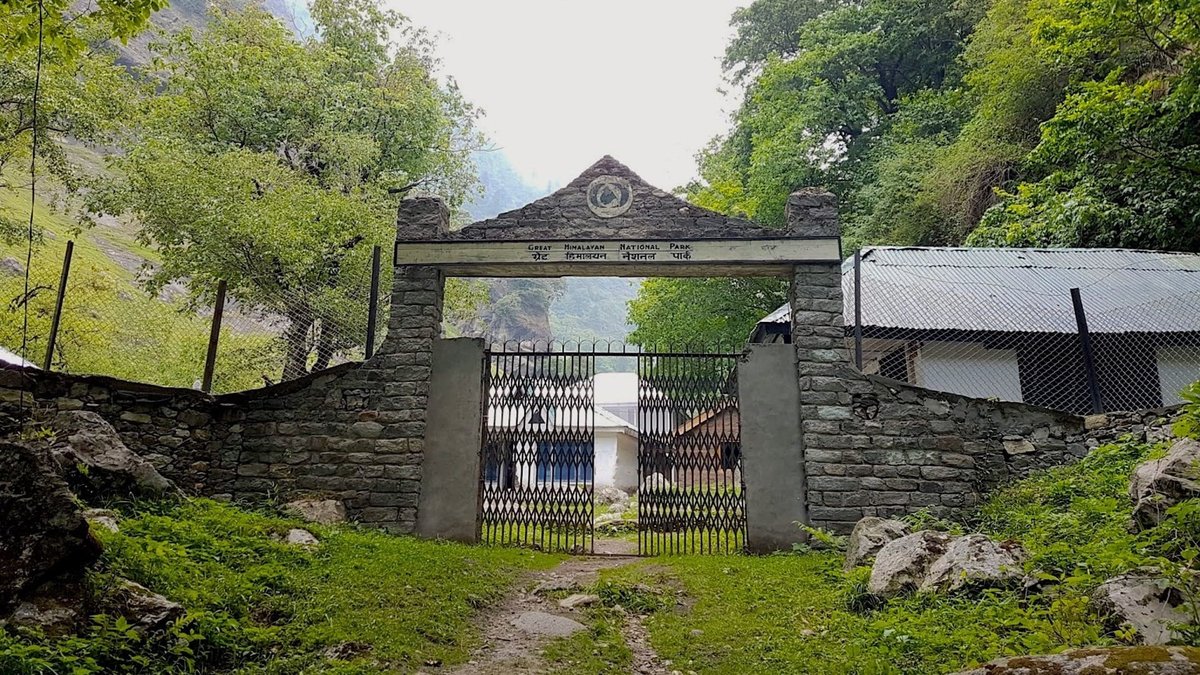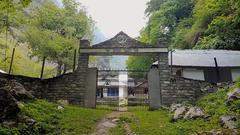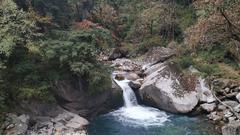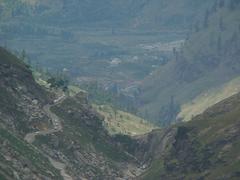
Great Himalayan National Park: Visiting Hours, Tickets, and Comprehensive Travel Guide
Date: 14/06/2025
Introduction
Nestled in Himachal Pradesh’s Kullu district, the Great Himalayan National Park (GHNP) stands as a beacon of biodiversity, ecological importance, and cultural vibrancy in the Indian Himalayas. A UNESCO World Heritage Site since 2014, GHNP covers approximately 1,171 square kilometers of dramatic landscapes—ranging from subtropical forests to glacial peaks reaching over 6,000 meters. The park supports over 800 vascular plant species and more than 375 fauna species, including the endangered snow leopard, Himalayan brown bear, and the Western Tragopan (UNESCO; PeakVisor; The Hindu; Incredible India).
GHNP offers a wealth of experiences—scenic trekking, wildlife and birdwatching, camping, and cultural immersion in Himachali villages. Sustainable tourism is central to the park’s ethos, with required permits and regulated hours (typically 8:00 AM–5:00 PM) to protect its fragile ecosystems (Travel + Leisure Asia; Savaari). This guide provides detailed visitor information, travel tips, history, and practical advice for an enriching and responsible visit.
Table of Contents
- History and UNESCO Recognition
- Geography and Ecology
- Biodiversity Highlights
- Visitor Information
- Trekking and Activities
- Conservation and Community Involvement
- Frequently Asked Questions (FAQs)
- Conclusion and Planning Resources
- Sources
History and UNESCO Recognition
Origins and Establishment
GHNP’s journey began in the early 1980s, with conservationists recognizing the need to protect the Western Himalayas’ unique biodiversity and vital river catchments. After years of ecological research and community consultation, the park was officially notified in 1999, with boundaries that respected local communities and avoided displacement (India Highlight; The Hindu).
UNESCO Inscription
India nominated GHNP for UNESCO World Heritage status in 2011, emphasizing its natural beauty, biodiversity, and endangered species. Inscription was granted in 2014 under Criterion (x), recognizing GHNP as one of the world’s most significant habitats for in-situ conservation (UNESCO).
Geography and Ecology
Location and Area
GHNP is located in the Banjaar Sub-Division of Kullu District, Himachal Pradesh, bordered by Pin Valley National Park, Rupi Bhaba Sanctuary, and Kanwar Wildlife Sanctuary. The park covers 1,171 sq km, with elevations rising from 1,500 to 6,000 meters (PeakVisor; Times of India; Tirthan Valley Stay).
Topography
The terrain features steep valleys and high peaks—such as Pyramid Peak (6,230m)—and encompasses four major valleys: Tirthan, Sainj, Jiwa Nal, and Parvati. These valleys, with their glacial rivers, feed into the Beas and Indus river systems (PeakVisor; Himalayan Outback).
Ecological Zones
GHNP lies at the confluence of the Indomalayan and Palearctic biogeographical realms, supporting at least 25 forest types—from subtropical broadleaf to alpine meadows and glacial habitats (ehimachal.org; PeakVisor).
Biodiversity Highlights
Flora
- Plants: Over 805 vascular plant species, including rare and medicinal plants.
- Lichens, Mosses, and Liverworts: Notable diversity, with significant endemism.
Fauna
- Mammals: 31 species, including the snow leopard, Himalayan brown bear, musk deer, blue sheep, and Himalayan tahr (Viacation; ApnaYatra).
- Birds: 209 recorded species—Western Tragopan (endangered), Himalayan Monal, koklass pheasant, cheer pheasant, lammergeier, and golden eagle.
- Other Fauna: 12 reptiles, 9 amphibians, 127 insects, 17 mollusks, and 11 annelids (ehimachal.org).
Conservation Value
GHNP’s isolation and ecological gradients foster high endemism and make it a vital center for Himalayan biodiversity (National Park Travel).
Visitor Information
Access and Entry
- Location: ~50 km from Kullu; main access via Gushaini (Tirthan Valley) and Neuli (Sainj Valley).
- Nearest Airport: Bhuntar (Kullu-Manali Airport), ~50 km.
- Railway Station: Joginder Nagar, ~150 km.
- By Road: Kullu is well-connected to Shimla, Chandigarh, and Delhi.
Visiting Hours and Tickets
- Hours: Typically open 8:00 AM–5:00 PM; confirm with local authorities before visiting.
- Tickets/Permits: Required for all visitors, with additional charges for trekking, guides, and cameras.
- Indian nationals: INR 50–200 per day
- Foreign nationals: INR 300–500 per day
- Trekking permits: INR 100–500 (trail-dependent)
- How to Buy: At park entry gates or through authorized operators (Travel + Leisure Asia; Himalayan Ecotourism)
Accommodation
- Inside Park: 14 Forest Department guesthouses (Sairopa, Sainj, Banjar, Shangarh).
- Outside Park: Homestays, eco-lodges, and guesthouses in Kullu, Tirthan Valley, and buffer zones—many support sustainable practices.
Accessibility
- Physical Access: Trekking is often required to explore core zones. Lower valleys and buffer villages are moderately accessible; some facilities are available for visitors with limited mobility.
- Facilities: Basic; carry essential supplies, as there are no shops or ATMs inside the park.
Best Time to Visit
- Ideal Seasons: April–June and September–November.
- Avoid: Monsoon (July–August, landslides) and winter (December–March, snowbound).
Trekking and Activities
Major Trekking Routes
- Tirthan Valley Trek: Day hikes or multi-day expeditions to Rolla, Shilt, Chhoie Waterfall (Savaari).
- Sainj Valley Trek: Neuli to Shangarh meadows and Pundrik Lake.
- Raktisar Trek: Challenging multi-day trek to the Sainj River source.
- Jiwa Nal Valley Trek: Offbeat, ideal for birdwatchers.
Activities
- Wildlife & Birdwatching: Spot rare mammals and birds, especially in spring and autumn.
- Camping: Designated sites only; no permanent accommodation in the core zone.
- Village Visits & Cultural Experiences: Stay in homestays, witness local festivals, and sample traditional cuisine.
- Photography: Capture snow-capped peaks, wildflowers, and rare wildlife.
- Guided Tours: Available through certified operators for trekking and birdwatching (Himalayan Ecotourism).
Conservation and Community Involvement
Participatory Management
GHNP’s ecozone is home to villages whose residents are key partners in conservation. Community cooperatives and ecotourism initiatives provide alternative livelihoods, while eco-development committees promote sustainable tourism (Himalayan Ecotourism). The park’s strategy emphasizes:
- In-situ biodiversity conservation
- Environmental education
- Traditional rights recognition
Conservation Challenges
GHNP faces threats from climate change, habitat encroachment, and unregulated tourism. Ongoing efforts focus on ecological monitoring, habitat restoration, and balancing conservation with community needs (UNESCO).
Frequently Asked Questions (FAQs)
Q1: What are the official visiting hours?
A: Typically 8:00 AM–5:00 PM; confirm locally for seasonal variations.
Q2: How do I obtain tickets or permits?
A: At park gates or through authorized tour operators; trekking permits are mandatory for most trails.
Q3: Are guided tours available?
A: Yes, certified local guides can be hired at entry points or booked in advance.
Q4: Is GHNP accessible to differently-abled visitors?
A: Terrain is challenging, but some areas near entry points and buffer villages are accessible with assistance.
Q5: What should I pack?
A: Warm layers, rain gear, sturdy boots, first-aid kit, water purification, food supplies.
Q6: Is camping allowed inside the park?
A: Yes, at designated sites; bring your own equipment.
Conclusion and Planning Resources
GHNP is a sanctuary of unparalleled natural beauty, biodiversity, and cultural heritage. From high-altitude treks to immersive village stays, the park offers meaningful experiences for responsible, eco-conscious travelers. Proper planning—regarding permits, timing, and preparation—is essential to maximize your visit while supporting conservation and local communities.
For up-to-date travel tips, interactive maps, and official notices, download the Audiala app and follow related social media channels. Explore additional resources on Himachal Pradesh’s historical sites and trekking routes to enrich your Himalayan journey.
Sources
- India Highlight – Great Himalayan National Park
- UNESCO World Heritage Centre – Great Himalayan National Park
- The Hindu: Himachal Park is now a World Heritage Site
- Incredible India: Great Himalayan National Park
- PeakVisor: Great Himalayan National Park
- Himalayan Ecotourism: Great Himalayan National Park
- Travel + Leisure Asia: Guide to Great Himalayan National Park
- Savaari Blog: Things to do in Great Himalayan National Park
- ApnaYatra: Great Himalayan National Park Information




